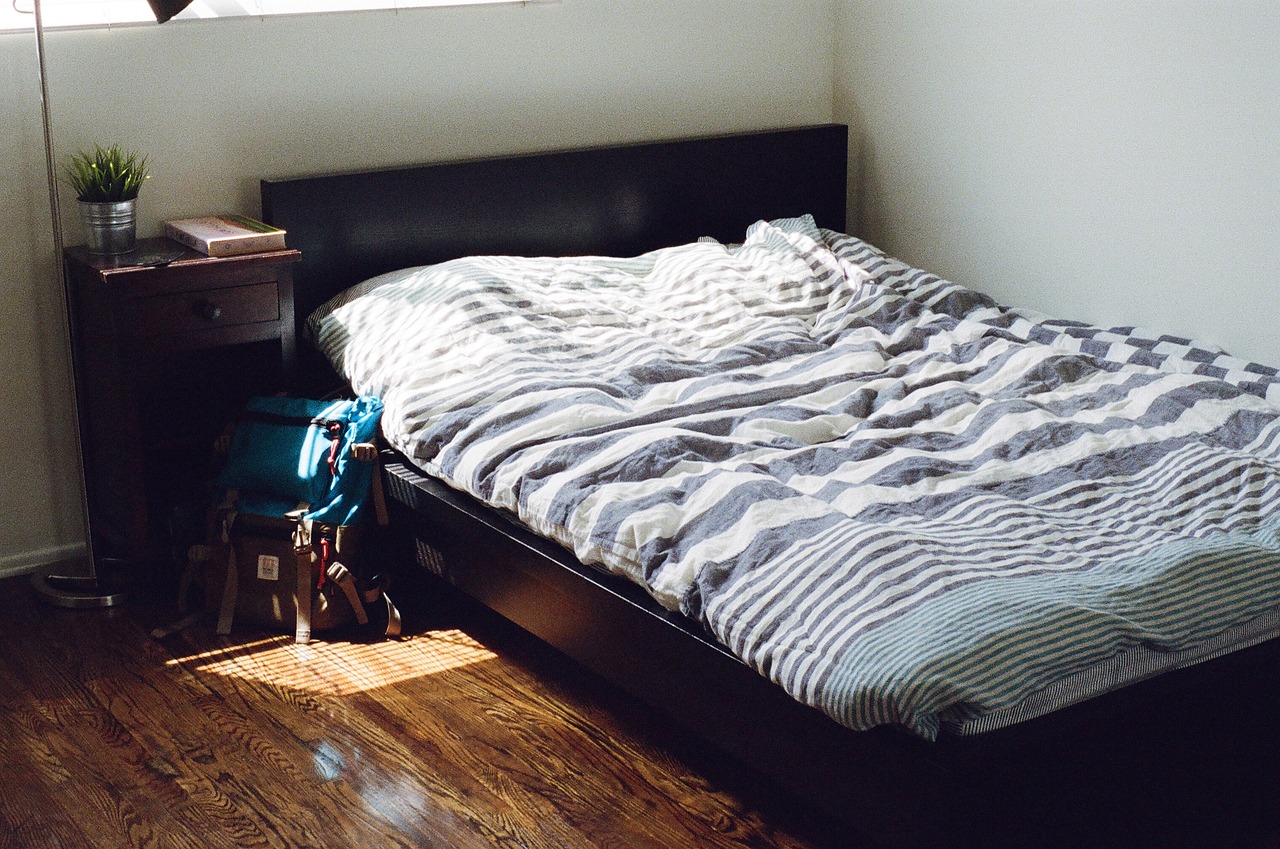Do you know that bed bugs are becoming a rising problem in urban environments? These tiny, blood-sucking pests have been around for thousands of years, but in recent years, they have made a resurgence in cities across the world.
Bed bugs are notoriously difficult to control, and their presence can have a significant impact on human health and wellbeing. In this article, we will explore the role of bed bugs in urban environments, including their biology and behavior, the impact they have on human health, and the challenges associated with controlling them in densely populated areas.
As you may already know, bed bugs are small, flat insects that feed on the blood of humans and animals. They are resilient and can survive for months without feeding. Bed bugs are also excellent hitchhikers and can easily move from one location to another, making them a challenge to control.
In recent years, bed bugs have become a growing concern in urban environments, particularly in densely populated areas such as apartment buildings and hotels. The presence of bed bugs can cause significant stress and anxiety for individuals and families, and they can also lead to health problems such as skin rashes, allergic reactions, and even anemia in severe cases.
In the following sections, we will explore the biology and behavior of bed bugs, their impact on human health, and the challenges associated with controlling them in urban environments.
Biology and Behavior of Bed Bugs
You won’t believe how sneaky and persistent these tiny blood-suckers can be, infiltrating even the cleanest and most well-kept homes.
Bed bugs are small, flat, wingless insects that feed on the blood of humans and animals. They are primarily active at night, and their bites can cause itching, redness, and swelling.
Bed bugs are known for their rapid reproduction rates. A single female can lay up to 500 eggs in her lifetime, and the eggs can hatch in as little as 6 days. They can survive for months without feeding, making them difficult to eradicate.
Bed bugs feed by piercing the skin of their host with their elongated beak and injecting saliva that contains an anticoagulant to prevent blood from clotting. They then suck blood for 3-10 minutes before retreating back to their hiding places.
Impact of Bed Bugs on Human Health
You might not realize it, but bed bugs can have a significant impact on your health, both physically and mentally. Bed bug transmission can occur through bites, fecal matter, and shed skins, causing skin irritation, allergic reactions, and potential secondary infections.
In addition, the psychological effects of bed bug infestations can be severe, leading to anxiety, insomnia, and depression. The fear of being bitten by bed bugs can cause significant stress and anxiety, affecting your overall quality of life.
Furthermore, the mental impact of bed bug infestations can extend beyond the individual. The stigma associated with bed bugs can cause social isolation and discrimination, leading to a breakdown in relationships and community trust.
The financial burden of bed bug treatments can also cause a significant strain on individuals and families, leading to increased stress and anxiety. Therefore, it’s essential to address the impact of bed bugs on human health, both physically and mentally, and develop effective strategies to prevent and control bed bug infestations.

The resurgence of Bed Bugs in Urban Environments
As you navigate through your city, there’s a hidden resurgence of a tiny and insidious pest that’s slowly creeping into homes, hotels, and businesses, leaving a trail of itchy bites and psychological distress in its wake. Bed bugs, which were once thought to be eradicated from urban environments, have made a comeback in recent years.
The causes of their resurgence are numerous, including increased travel, lack of public awareness, and resistance to pesticides.
The economic impact of bed bugs in urban environments is significant. Infestations can lead to lost revenue for businesses, decreased property values, and costly remediation efforts. In addition, individuals who experience bed bug infestations may face financial burdens due to the cost of hiring exterminators, replacing infested items, and seeking medical treatment for bites.
Overall, the resurgence of bed bugs in urban environments is a concerning issue that requires increased attention and action.
Challenges of Controlling Bed Bugs in Densely Populated Areas
Living in densely populated areas can make it harder to control and eliminate bed bugs, as they can easily spread from one location to another. These pesky creatures have become a major challenge for urban communities, infiltrating homes, hotels, and businesses alike.
Bed bugs can hitchhike on clothing, luggage, and furniture, making it difficult to prevent their spread. Moreover, bed bugs are known to be resistant to many insecticides, which makes the task of controlling them even more challenging.
To tackle this problem, community education and government regulations are essential. Community education can help raise awareness about bed bug prevention and control. This can include simple steps like regularly inspecting your home for signs of bed bugs, washing and drying clothes at high temperatures, and avoiding buying used furniture without inspecting it properly.
On the other hand, government regulations can ensure that businesses and hotels are taking proactive measures to prevent and control bed bug infestations. This can include regular inspections, proper pest control measures, and strict guidelines for handling bed bug complaints.
By working together, we can help reduce the spread of bed bugs in densely populated areas.
Proactive Measures for Preventing and Managing Bed Bug Infestations
It’s important to take proactive measures for preventing and managing bed bug infestations. This includes regularly inspecting your belongings for signs of the pests and promptly reporting any sightings to your landlord or pest control professional.
Education campaigns can also play a key role in preventing infestations by informing the public about the signs and symptoms of bed bugs, as well as how to prevent their spread.
Integrated pest management (IPM) is another effective approach to managing bed bug infestations. This involves a combination of tactics, such as using pesticides, vacuuming, and sealing cracks and crevices, to control bed bugs in a safe and effective manner.
By implementing these proactive measures, we can not only prevent the spread of bed bugs in urban environments but also ensure the safety and well-being of those who live and work in these areas.
Frequently Asked Questions
How can I tell if I have a bed bug infestation in my home?
If you suspect that you have a bed bug infestation in your home, there are a few signs to look out for. The most obvious sign is the presence of bed bug bites on your skin. These bites often appear in clusters and can be itchy and irritating.
You may also notice blood stains on your sheets or mattress, as well as small brown or black spots (bed bug feces) on your bedding or walls.
If you see any of these signs, it’s important to take action immediately to prevent the infestation from spreading.
Do bed bugs transmit diseases to humans?
Are you concerned about the medical risks associated with bed bugs? While bed bugs aren’t known to transmit diseases to humans, their bites can cause itchy red welts and allergic reactions in some people.
To prevent a bed bug infestation in your home, it’s important to inspect secondhand furniture and luggage before bringing them inside. Use protective covers on your mattress and box spring, and vacuum regularly.
If you do suspect a bed bug infestation, contact a pest control professional immediately to prevent further spread and potential health risks.
Can bed bugs survive in colder climates?
Did you know that bed bugs can survive in colder climates? While they prefer warmer temperatures, bed bugs are able to enter a state of hibernation in order to survive the winter months.
However, with the effects of climate change, bed bug populations are becoming more prevalent in areas that were once too cold for them to thrive. As temperatures continue to rise, it’s likely that bed bugs will become an even bigger problem in urban environments.
How long do bed bugs typically live?
So, you wanna know how long bed bugs typically live? Well, that’s the million-dollar question!
I mean, who wouldn’t want to know how long these pesky little bugs are gonna stick around?
The truth is, bed bugs can live anywhere from 4 to 12 months, depending on a variety of factors.
Their lifespan is heavily influenced by their reproduction and behavior, which can vary depending on environmental conditions.
And let’s not forget about the impact bed bugs can have on your mental health. The mere thought of these blood-sucking critters can be enough to send anyone into a panic.
And don’t even get me started on the economic impact they can have in urban areas.
The costs associated with treating an infestation can be astronomical.
So, if you’re dealing with bed bugs, it’s important to act fast and take control of the situation before it gets out of hand.
Are there any natural remedies for getting rid of bed bugs?
Looking for a natural way to get rid of those pesky bed bugs? Essential oils might be the answer! However, it’s important to note that essential oils alone may not completely eliminate a bed bug infestation. If the infestation is severe, it’s recommended to seek professional extermination services.
Some essential oils, like lavender, tea tree, and peppermint, have been known to repel bed bugs. While natural remedies may seem appealing, it’s important to prioritize the health and safety of yourself and others in your living environment.
Conclusion
As you finish reading about the role of bed bugs in urban environments, you may feel a shiver down your spine. These tiny creatures may seem insignificant, but they can wreak havoc on your health and sanity.
They symbolize the hidden dangers of city living, where close proximity to others can lead to the spread of disease and pests. But don’t despair.
You can take proactive measures to prevent and manage bed bug infestations. By understanding their biology and behavior, you can identify signs of an infestation and take action early.
With the right tools and techniques, you can protect yourself and your community from the nuisance of bed bugs. So don’t let these little pests get under your skin – take control and keep your urban environment safe and healthy.










